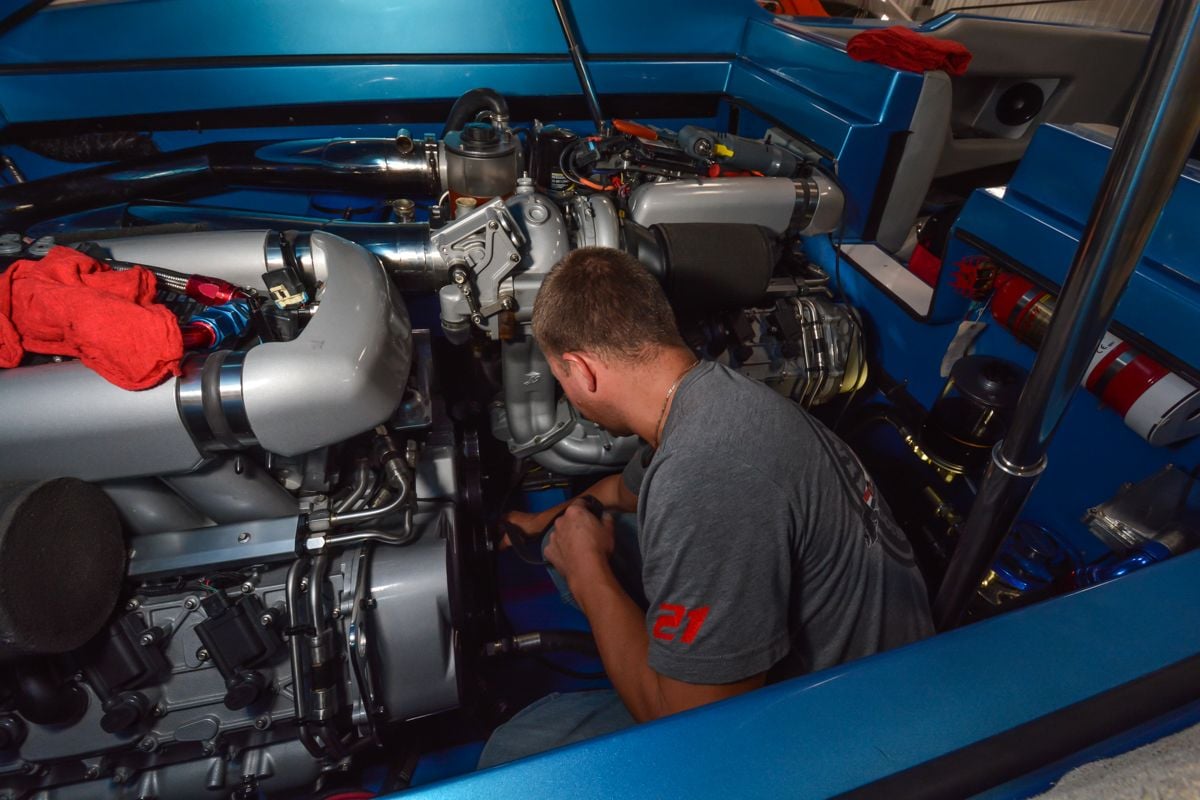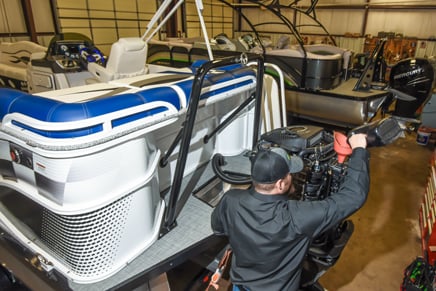September 23, 2022 by Boat Planet
Fall maintenance is never fun. It is time-consuming and signals the end of another boating season. Most boaters opt to hire a professional to do their “winterization” for them, which takes a lot of the big to-do items off the list. But you still need to know what is supposed to be done by the pros, so you can manage the process. And there are simpler things that you can do yourself.
Before You Start
The best marine mechanics get booked up fast. So, schedule your service early to get a good date that allows you to make the most of the boating season without waiting too late in the fall.

Engine Maintenance
Before you head to the haul-out site, give your mechanic a helping hand by topping off your tank and adding a multifunction fuel stabilizer like gas or diesel Star Tron. This ensures the stabilizer is well mixed with the fuel and that it has had a chance to run through the whole system, which allows it to protect fuel in the filters and lines too.
These next steps should be handled by your mechanic as part of a comprehensive winterization service:
- Change the fuel filters and water separator
- Check the fuel line and bulb and replace if needed
- Change the oil; do not put this off until spring, as you need to eliminate residual acids and moisture in the system that can damage your engine if left unattended over the winter
- Replace the oil filter
- Fog the engine
- Replace the water impeller; this should be done at least once a year
- Flush the raw-water system, then fill with fresh antifreeze rated for your winter climate
- Freshwater cooling systems need to have their coolant level topped up
- Replace plugs
- Change transmission fluid, if applicable
- Check the wires and rotor cap
- Check the belts and adjust tension as needed
- Check the hoses for cracks, bulges, or soft spots and replace as needed
- Check the hose clamps for corrosion or wear and replace as needed
- Check the shift/throttle cables and tension, then lubricate the cables and linkage
- Check the sacrificial anodes and replace if more than 50 percent deteriorated
- Check the prop(s) for nicks and dents
- Grease the prop shaft and threads
- Remove the battery (top up electrolyte level and recharge if necessary) and put on a marine trickle charger
Depending on your engine type, there may be a few additional steps:
Stern Drives
- Inspect and remove plant life or barnacles
- Drain the gear case and check for moisture in the oil
- Check the rubber boots for cracks and pinholes
Outboards
- Disconnect the fuel hose and lubricate the cylinder walls and pistons in the carburetor
- Grease the propeller shaft and threads
- Change the lower unit gear oil
- Be sure to ask that they store your outboard engine in the lowest position

Beyond the Engine
- After the engine work is done, it makes sense for the service shop to do the following checklist items while they are in the boat:
- Flush the bilge and add antifreeze
- Fill the freshwater system and hot water heater with non-toxic propylene glycol antifreeze
- Disconnect the hot-water heater
- Pump out the holding tank and add antifreeze to the head
- Spray down the electronics connectors with an anti-corrosion lubricant, especially where the electronics will be removed for the winter (these connectors are particularly vulnerable to winter corrosion)
- Remove the bulbs from your navigation and running lights and spray the sockets with an anti-corrosion lubricant
Quick Do-It-Yourselfs
Even if you have professionals do everything else, you will need to remove valuables, electronics, linens, PFDs, fire extinguishers, flares, fenders, and other loose items. Sort them all in neatly labeled boxes for easy unpacking in the spring.
While you are there:
- Vacuum cushions and mattress and set them upright to allow airflow during storage
- Scrub the refrigerator and freezer to avoid mold, mildew, and unpleasant odors in the spring
- Set out No Damp Dehumidifiers and an odor control product such as MDG Mold/Odor Control to eliminate mold, mildew, and associated smells
- Oil the hinges and door latches so they will work smoothly next spring
- Lubricate all snaps and zippers, whether the canvas is left on over the winter or not
Almost Done
After all the greasy work has been completed and you have gotten everything you should out of the cabin, it is time for one final cleaning. Depending on the condition of the boat, you may opt to call in a detailer to make quick work of this tedious process:

- Do a complete washdown of the boat, using specialty cleaners to remove rust stains, tree sap, water runoff, and so forth on fiberglass; these stains can become permanent by spring
- Wax the hull and topsides, or at least any topside that will be exposed during the coming months
- If you notice nicks and wear in the boat paint, get them fixed to keep the paint from disintegrating further
- If you are going to leave your canvas up as a boat cover, protect the Isinglass against damage with a specialty protectant; you should do this on a monthly basis
Congratulations! You are done. Relax and break out your winter hobbies, knowing that you have set yourself up for an easy spring launch.
Hopefully, our checklist will help make getting your boat ready for winter easier and less stressful. How do you do your winterization, and what tips do you have to make the process easier?